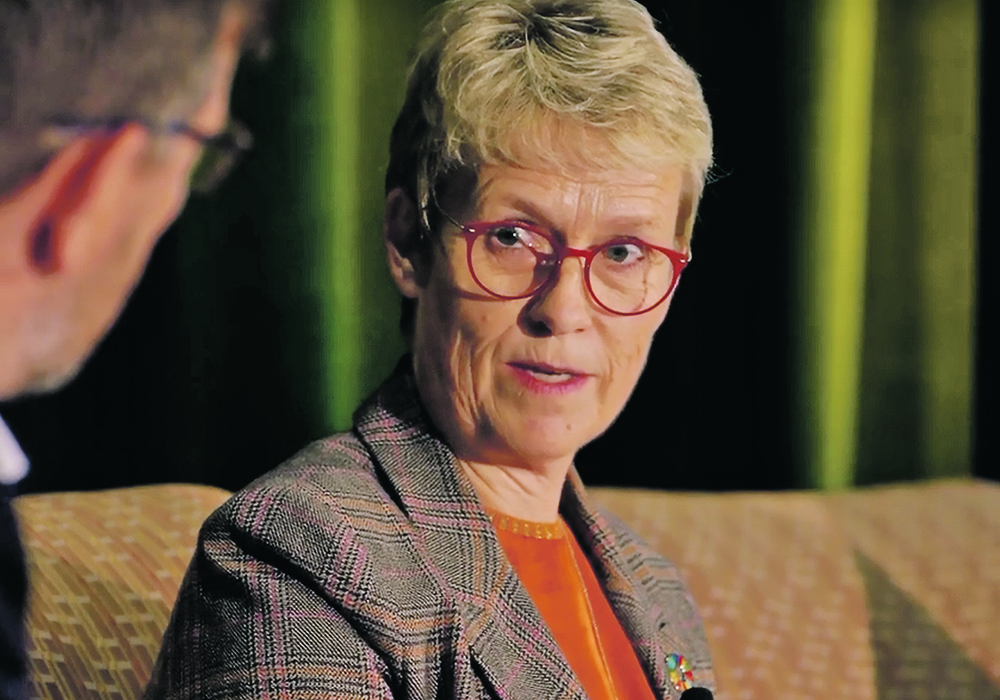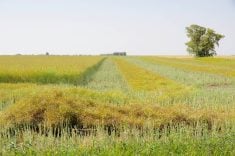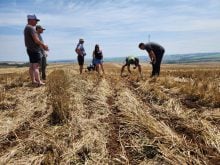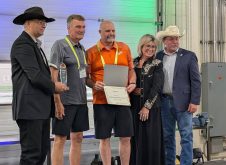Farmers in Europe and Mexico say roadblocks for some forms of agricultural innovation stand in the way of sustainability
CHARLOTTETOWN, P.E.I. — Farmers from countries reluctant to approve new tools such as gene editing say they could use those technologies to meet demand, be profitable and ensure environmental sustainability.
Several representatives, including organic farmers, said during a North American European Union farm leaders conference that innovation is critical.
The pandemic, war in Ukraine and climate change all show how vulnerable the European food system is, said Lone Anderson, an organic dairy farmer from Denmark. The milk from her family farm, which uses milking, feeding and cleaning robots, is sold through a farmer-owned co-op to China for baby milk.
Read Also

Short rapeseed crop may put China in a bind
Industry thinks China’s rapeseed crop is way smaller than the official government estimate. The country’s canola imports will also be down, so there will be a lot of unmet demand.
“We also have a windmill and produce some electricity,” she said during a panel discussion on sustainability and innovation.
“I strongly believe that agriculture is an important part of the solution for reaching EU and international goals on climate change, biodiversity as well as economic growth.”
Anderson said disruptions have shown the need for new technologies, particularly so that the younger generation wants to farm and can earn a good income. Farmers are already incorporating sustainable practices on their individual farms, she said.
Panelists noted pressure on farmers from governments and the public to adopt practices that may not move them forward.
“But I think it’s also important that we as farmers are getting pushed a little,” Anderson said.
“I think it’s not necessary to push so much as we do in Europe, and the Farm to Fork, maybe not that much.”
The European strategy includes increasing the percentage of organically farmed land by 25 percent.
However, the European Commission is proposing two separate pathways for new genomic technology (NGT) and genetically modified organisms. It said it recognizes the role of technology in the green economy, but NGT plants would be banned in organic production.
Asked if gene editing would see the light of day in Europe, Anderson said it’s an important discussion.
“If I leave my hat as a chairman for the organic working party and take my Danish hat on, I will say as an organic farmer, like we have said many times today, innovation, innovation, innovation,” Anderson said.
“Genomic techniques can help us to go further and can help me so I also get strong seed growing and high yields on my farm. Because if I as an organic farmer have to be sustainable in the future, also I have to have the best seed available for me.”
Sandra Pina, speaking on behalf of the National Agricultural Council in Mexico, said farmers in that country are worried they will be left behind by government policies that prevent farmers from using glyphosate beginning in 2024.
Canada and the United States have taken Mexico to a dispute settlement panel under their free trade agreement over Mexico’s decision to ban genetically modified corn for human consumption.
Pina said the current government is not making science-based decisions and assumes there is a health risk. They are getting their information from elected officials who came from environmental organizations and have an agenda, she added.
“I think we have seen forceful steps against crop protection products, against biotechnology, that are not going to stop with that decree, even though we are in the middle of a dispute settlement panel,” she said through a translator.
New plant breeding techniques could be a game changer for Mexican farmers who struggle with a lack of water and are aware they have to farm more sustainably. Each region has different farm structures, challenges and production. For example, small farmers in the south and southeast produce only enough for their own consumption and don’t have money to invest in technology. Other areas, in the centre and north, have great capacity to use technology.
She said farmers have to organize so they have the chance to access financing and adopt technology, such as biotechnology, to help them be more sustainable.
The government has to recognize this and work with farmers.
“There has been a certain willingness by some specific officials to have conversations, but it is something that remains very limited,” she said.
Pina also said there are other pesticides in danger of being banned based on the precautionary principle rather than scientific evidence.
It’s unlikely Mexico will have a policy that opens the door to plant breeding and other technological innovations any time soon, she said.
Luis Eduardo Gonzalez, president of the Mexican Union of Agrochemical Manufacturers and Formulators, said taking away tools that farmers need to protect their crops is not sustainable.
“If we continue like this, the production is not going to increase, so there is a big challenge,” he said.
Elise Golan, the U.S. Department of Agriculture’s director for sustainable development, said too often farmers get caught up in a process that someone else has devised. She said governments should be talking to farmers about objectives, the desired outcomes and how to get there together, recognizing the diverse sectors across the industry.
She told delegates sustainability challenges won’t be met unless more production occurs on existing land and resources.
Golan also said certain foods shouldn’t be given “automatic gold stars” while others are given red flags.
“Sustainability is simply more complicated than that,” she said.
The return of circularity is a positive development, she added. Circularity isn’t a novel concept in agriculture but seeking new uses for existing products or waste can help meet sustainability goals.
For example, in the United States researchers are working to turn citrus peel into nylon and shells from almonds, walnuts and pistachios into carbon black, which is a plastic filler.
















